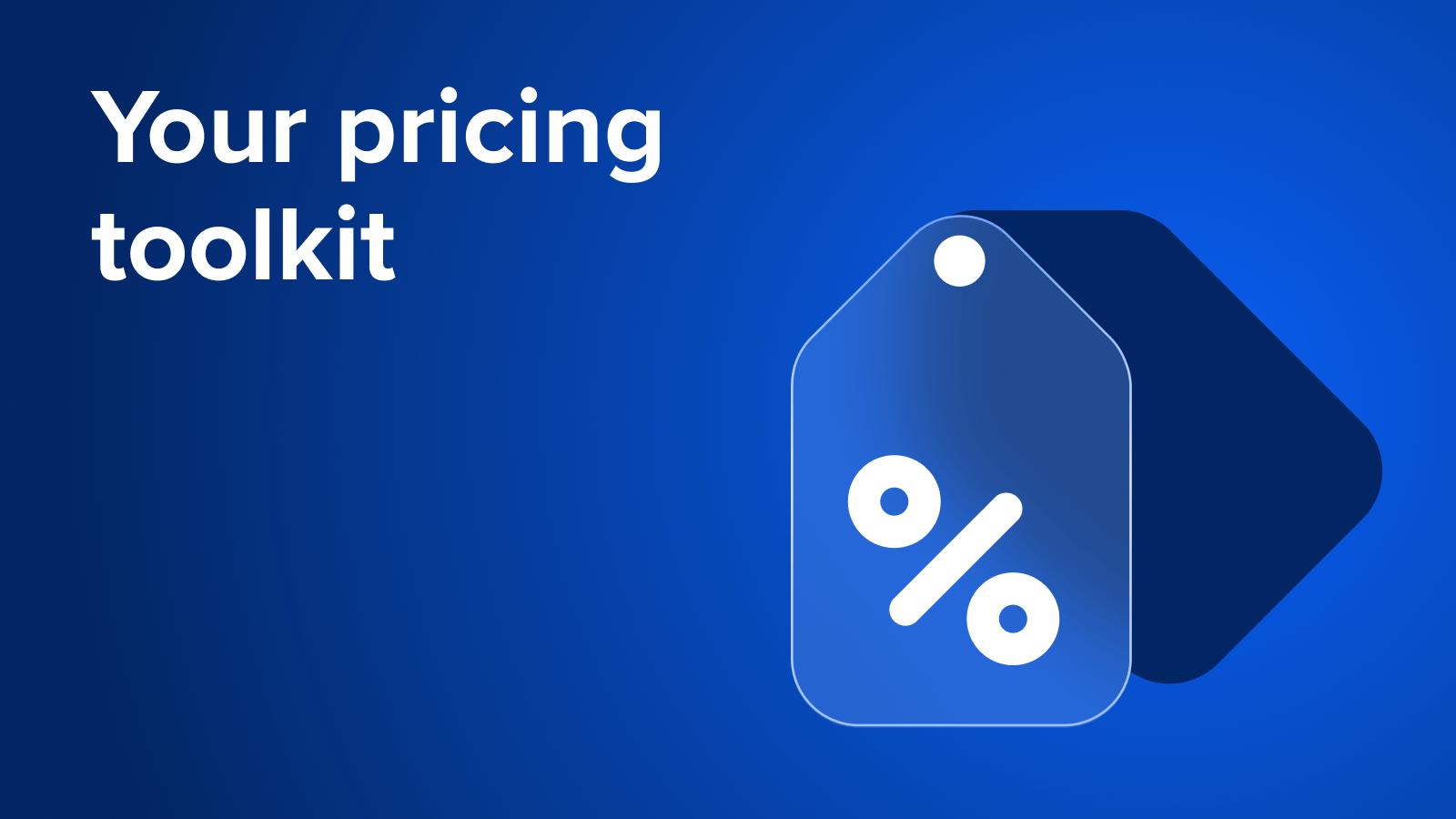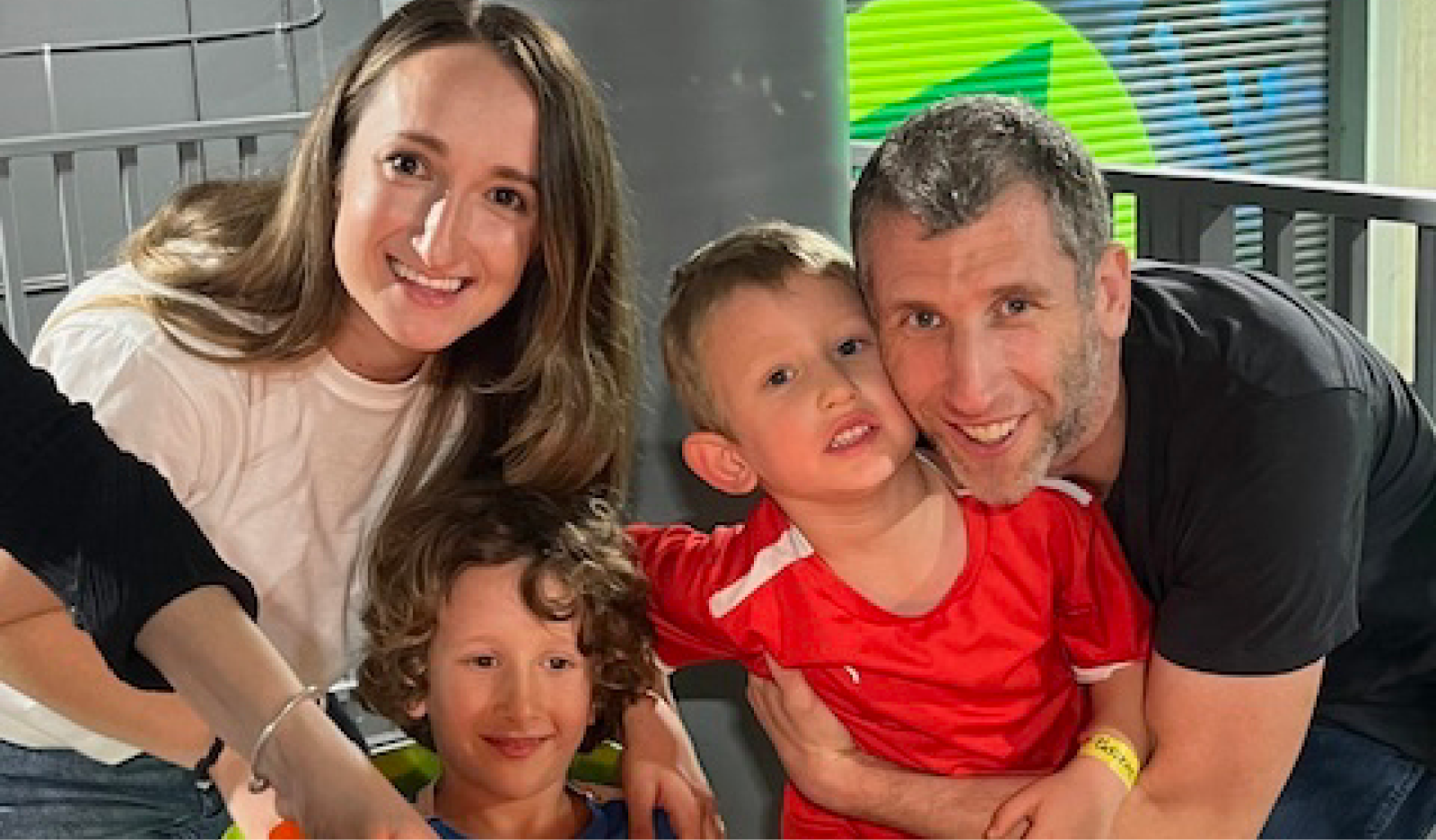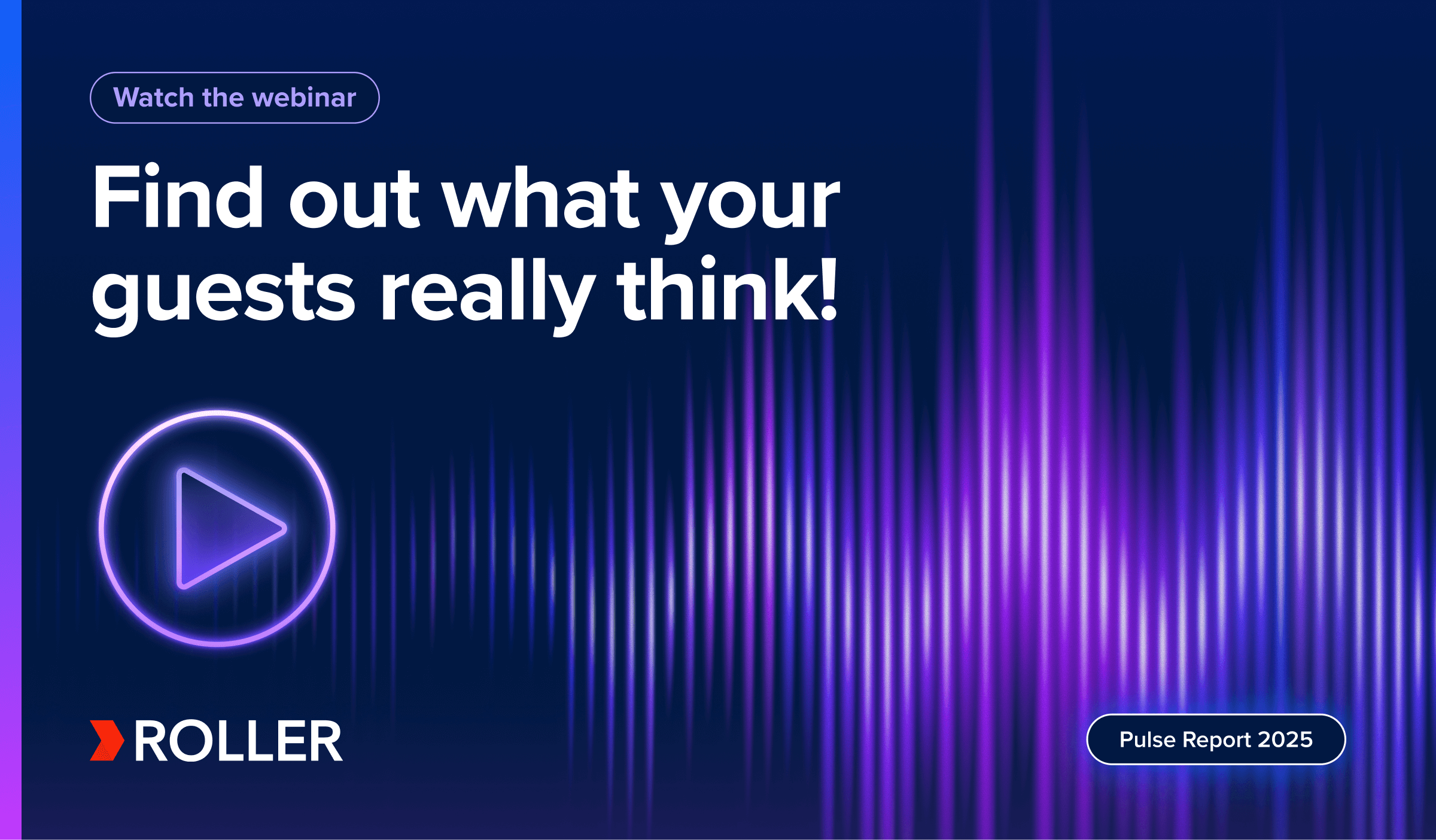Attractions Toolkit: How to Build a Smarter, Stronger Team in 2025

In the latest Attractions Toolkit webinar, ROLLER’s Brett Sheridan sat down with Travis Kohlmeyer, General Manager US at Workforce.com, to unpack the biggest opportunities of staff management in the attractions industry.
From smart hiring strategies to modern onboarding, and scheduling systems that actually work, this session was packed with real-world tips for operators looking to build stronger teams and better guest experiences.
🎥 Missed the live session? Watch the full recording here:
Meet the speakers
Brett Sheridan, Field GM at ROLLER
Brett has decades of experience owning and running attractions businesses, from founding the first OTA in the southern hemisphere, building and operating multiple FEC venues - iFLY Indoor Skydiving and VR venues across APAC, and managing the iconic Luna Park on Sydney harbor. Brett is passionate about equipping attraction operators with tangible, practical tips to help make running a profitable business easy. He now helps ROLLER customers implement technology that empowers teams and elevates guest experiences.
Travis Kohlmeyer, GM US at Workforce.com
Travis leads North American operations for Workforce.com, an HR tech platform that helps businesses streamline scheduling, payroll, compliance, and more. With over seven years of experience in workforce management, Travis has worked across sales, implementation, and support—giving him a well-rounded perspective on the challenges businesses face. From small family-run operations to large enterprise groups, he’s helped organizations simplify their labor processes and run more efficiently.
1. Hire with purpose, not panic
The first challenge every venue operator faces is hiring the right people, and doing it quickly. However, when that process is rushed, it can lead to poor cultural fits, misaligned expectations, and high turnover. Instead of scrambling to fill roles, operators need a structured and intentional approach to hiring.
Screen smarter with pre-interview filters
Travis Kohlmeyer emphasized the importance of pre-interview filtering to streamline the process and eliminate candidates who aren’t a good match early on.
“Filter early with pre-interview screening questions. People spend so much time filtering through resumes and questions that people have actually answered. You can use different types of forms and AI resume screening to identify red flags and good fits, and have those make it or break it questions right from the get go.”

This strategy ensures that hiring managers spend their time only on those most likely to succeed in the role.
Use peer referrals to find great fits
Another effective strategy is encouraging peer referrals. As Travis explained, current staff members tend to refer friends who share similar values and work styles. These referred candidates often onboard faster, stay longer, and contribute to a strong team culture from day one.
“They know who they actually enjoy working with, and that often leads to higher quality, faster hires. They can typically onboard faster, they stay longer, they're happier working with their friends, and they fit the team culture pretty much naturally.”

Move fast and meet candidates where they are
Speed is also essential in a competitive hiring market. Long delays between application and interview can result in losing top candidates to other employers. Travis recommended building a fast and approachable process that resonates with younger applicants.
"Design a fast and friendly process. The younger generations expect speed, so if you're taking too long, you're probably going to lose them to a faster employer. So many young staff members are using mobile friendly forms and have quick texts or follow-ups that are automated.”

Hire for attitude, not just experience
Hiring should also focus on more than just technical ability. In guest-facing environments like attractions and theme parks, attitude and cultural alignment are paramount.
“Hire for attitude, train for skill. It's always going to be a challenge when you're hiring young workers… Look for soft skills like enthusiasm, reliability, communication skills or situational awareness. Those people are going to grow the best with your business and be long-term hires.”

To assess those soft skills, Travis suggested using role-based and situational interview questions. By asking candidates how they would respond to common workplace challenges—such as dealing with an upset guest or covering for a teammate who didn’t show up—you can quickly gauge their problem-solving abilities and emotional intelligence. These types of questions help reveal whether someone will thrive in a team-based, fast-paced environment.
Understand candidate motivations and availability early
To avoid mismatches down the line, Travis recommended asking open-ended questions that reveal a candidate’s true availability and motivation. This includes preferred shifts, hours, and scheduling expectations, key information that should be recorded early and used throughout scheduling workflows.
2. Make onboarding frictionless
Onboarding isn’t just about paperwork—it’s about creating confident, engaged team members from day one. When done right, onboarding sets the tone for an employee’s entire experience, boosts retention, and builds a stronger, more connected team. As Brett shared from his time managing Luna Park, the traditional approach can be highly manual and time-consuming:
“We held recruitment and onboarding over the course of four days… we grouped them by departments and undertook role plays and job training from the get-go. However, the administration of that was highly manual. It took a long time pre and post.”
.png?width=56&name=ROLLER%20Chevron%20(1).png)
Travis outlined several ways to modernize the onboarding process—making it faster, more efficient, and ultimately more effective for everyone involved.
Let staff self-serve where possible
The first step to smarter onboarding is reducing administrative burden.
“Managers spend hours and hours chasing paperwork, especially when it adds legal ramifications in an onboarding process. Let the new hires fill out what they can.”

Travis emphasized that many forms, like tax and bank details or compliance documentation, can be handled digitally by new hires themselves, reducing delays and minimizing errors.
Go mobile-first
Younger staff expect smooth, mobile-friendly experiences. As Travis explained, many don’t even own laptops:
“Kids are already on the phone. SO making sure that they can access it on their phone… in bite-sized pieces and like digital-first formats using QR codes or welcome videos is a good way to start off.”

By designing onboarding that works on mobile devices, you meet staff where they are, literally, and keep them engaged.
Set clear expectations from day one
Don’t assume that new hires, especially first-time workers, know what’s expected of them.
“You need to let them know from the get go… when and how they’re going to receive their shifts or how to request time off or shift swaps or what is the dress code or punctuality standards.”

Being explicit up front helps prevent future confusion and gives you something to refer back to if issues arise.
Build compliance into the process
Ensuring legal compliance is a critical part of the onboarding process, especially for venues that hire younger workers and minors. Travis emphasized that operators must account for age-specific labor laws, such as work permit requirements, shift length restrictions, break compliance, and more. By embedding these rules directly into their onboarding systems, businesses can significantly reduce risk and administrative overhead.
Automation plays a key role, with modern platforms capable of classifying staff correctly from the start and applying the appropriate compliance rules throughout scheduling and payroll processes. This proactive approach helps protect venues from costly errors while creating a safer, more accountable working environment.
Batch onboarding to save time and build connections
Instead of doing one-on-one onboarding sessions, Travis recommended bringing in small groups:
“Bring them in… five to ten at a time in a weekly or biweekly format. They get to pair with experienced team workers for hands-on learning.”

This approach not only streamlines the process for managers—reducing repetition and allowing key information to be delivered more efficiently—but it also fosters early team bonding. When new hires go through onboarding together, they’re more likely to form connections, feel comfortable asking questions, and build lasting peer support networks. This sense of early camaraderie can play a big role in reducing turnover.
Follow up in the first weeks
Onboarding doesn’t end after day one; maintaining momentum is crucial. Beyond one-on-one conversations, Travis recommends using automated reminders and lightweight surveys to gather feedback and keep communication flowing. These early touchpoints help identify misunderstandings, address issues before they escalate, and signal to new hires that the team genuinely cares about their experience, ultimately reducing the risk of early drop-off.
3. Use smart scheduling for better results
Manual scheduling is no longer sustainable, especially for busy, dynamic venues managing Gen Z staff, compliance requirements, and unpredictable demand.
Plan ahead to avoid mistakes
Travis encourages operators to build schedules at least one to two weeks in advance to improve attendance and minimize last-minute changes. Planning early also helps operators comply with “fair work week” laws, which are becoming more common and may penalize last-minute schedule adjustments. He added a practical suggestion:
“Schedule time for scheduling every week or every two weeks… so it’s not something you’re pushing off to the last minute.”

Start with templates and build from there
To simplify and standardize the scheduling process, Travis recommended using schedule templates as a base: “A few clicks can build out four fully staffed baseline [schedules] in minutes.” This ensures consistent shift coverage, helps new managers get up to speed faster, and reduces compliance issues stemming from manual errors.
Match skill levels by shift
For venues hiring junior or inexperienced staff, it's critical to balance skill levels on each shift. Managers should avoid placing too many new hires together without support. Many scheduling systems now offer visual tools, like color coding or skill-based tags, to make this easier.
Automate compliance protections
With age-based labor laws in play, automation becomes essential. Travis advised using systems that factor in rules like “max hours, max days per week, break times and curfews,” especially when hiring minors. Real-time alerts help managers avoid fines and protect employee well-being.
Let staff swap shifts (with guardrails)
Shift swapping can reduce manager workload and build accountability, especially among younger workers, when done right. “Let the staff go in and communicate with others that all have the same skill level and can work in each other’s positions,” said Travis, while still recommending manager approval for oversight. Brett noted this feature was a “game changer” at Luna Park because it allowed Gen Z staff to find eligible replacements directly via the app, without guesswork.
Use demand-based scheduling to optimize labor costs
You can also link scheduling to real-time demand. Travis explained that integrating data from your POS or booking system allows you to forecast traffic and assign staff accordingly.
“Start paying attention to your demand trends or sales or foot traffic or the amount of events or reservations you guys have. If you can integrate with the POS system, like if you're on ROLLER, and you want to get that over to a scheduling system, there is so much valuable information that you can incorporate into scheduling.”

He emphasized that this data-driven approach allows operators to build smarter schedules, reduce unnecessary labor costs, and align rosters with real business needs, especially when layered on top of baseline templates and flexible staffing.
Brett added that ROLLER’s integration with Workforce.com enables exactly this kind of predictive scheduling. “This allows you to look at historical data, the time of year, and the day of the week,” he said, making labor planning more accurate and less reactive.
4. Compliance doesn’t have to be complicated
Staffing compliance is often viewed as an afterthought, but failure to manage it correctly can expose venues to major risk. Travis emphasized that while compliance can be complex, it doesn’t need to be difficult if the right systems are in place.
Automate to stay ahead
Youth labor laws can be easy to overlook, and they vary significantly by location. In Chicago, for example, under-18s can only work three hours on a school day and must finish by 7 p.m. during the school year. As Travis explained, “Say you get out of school at five, you can't even work. You can only work two hours because you’ve got to go home.”
Automated alerts for these rules are essential for venues that hire minors. Likewise, automation is key when it comes to tracking staff qualifications. From CPR certifications to food handling permits, using systems that notify managers before credentials expire helps maintain a fully compliant workforce.
To reduce risk further, Travis recommended ditching paper records in favor of digital documentation:
“You don't want to be digging through a filing cabinet wondering where some safety incident just happened… having it online and in the cloud is going to just be a lifesaver.”

Keep records audit-ready
Travis also advised operators to prepare for audits at any time. Whether triggered by a guest incident or a random inspection, having everything centralized and up to date makes compliance far easier.
“That's information that you need to be prepared to share and have it at the end of your fingertips.”

One of the most common gaps occurs during onboarding. If contracts, emergency contacts, tax forms, or banking details are missing, it can delay scheduling and expose venues to compliance violations.
Connect compliance and scheduling
Lastly, Travis recommended integrating compliance engines directly with scheduling tools to prevent violations before they happen. Rather than cross-referencing payroll and schedules manually, integrated platforms flag issues in real time.
“Making sure they're integrated is really important.”

For operators of all sizes, embedding compliance logic into your staffing systems isn’t just smart, it’s essential.
Looking ahead and taking action
The final moments of the webinar offered a glimpse into the future of workforce management, where AI-driven tools are reshaping everything from applicant screening to compliance automation and predictive scheduling. Travis shared how innovations like AI co-pilots, gamified onboarding, and intelligent forecasting will soon become everyday tools for operators who want to stay ahead.
As Brett emphasized, these technologies aren’t just about saving time, they’re about freeing your team to focus on what really matters: delivering unforgettable guest experiences.
Ready to dive deeper? Explore all the resources from the presentation for more information on how to implement quick wins.
Want to learn how ROLLER can help your venue put these ideas into action? Book a free demo today.
Related articles


What Every Venue Needs to Know About Birthday Parties (from a Parent and a Pro)

2025 Pulse Report Webinar: Operators Unpack the Guest Insights
Enhance your guest experience
Get free education, tips and inspiration to help you run a successful venue.
